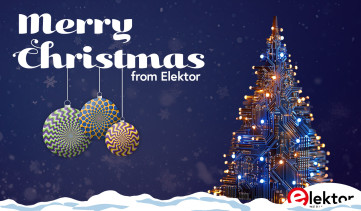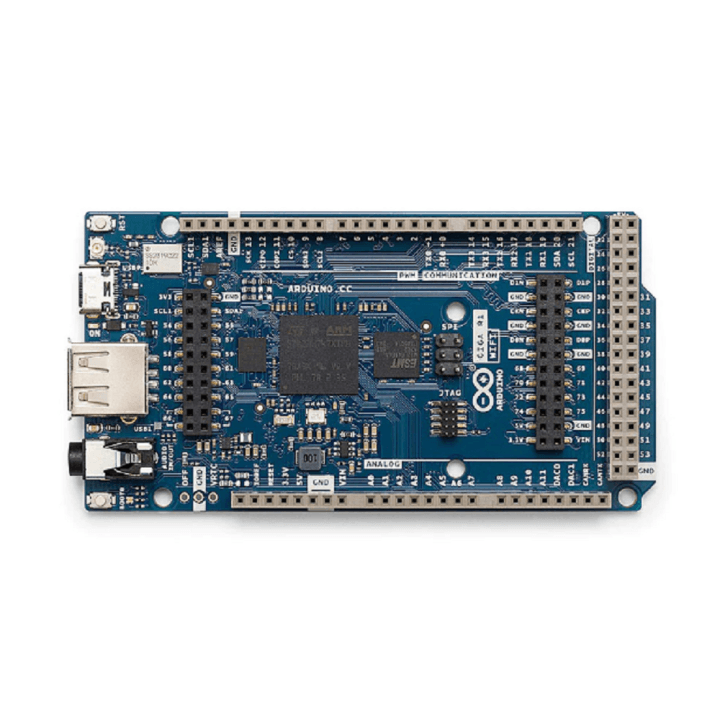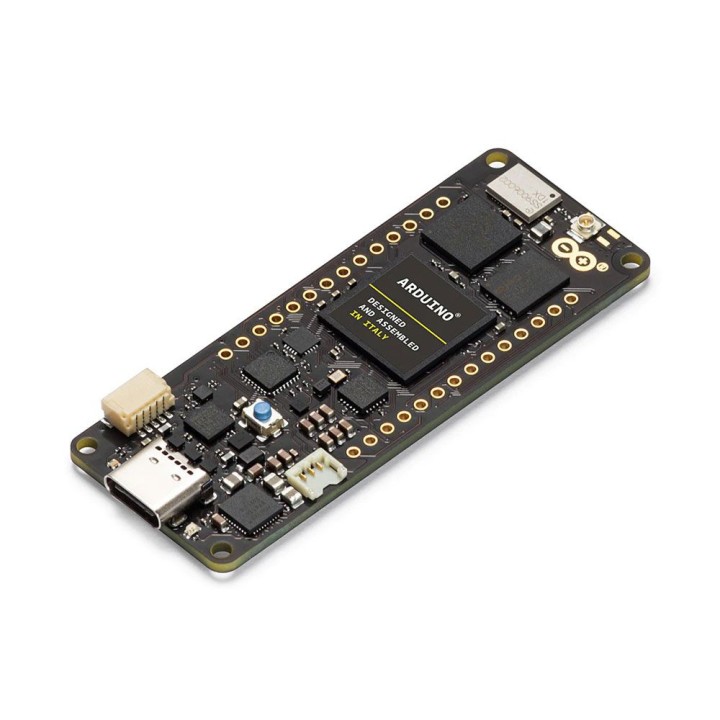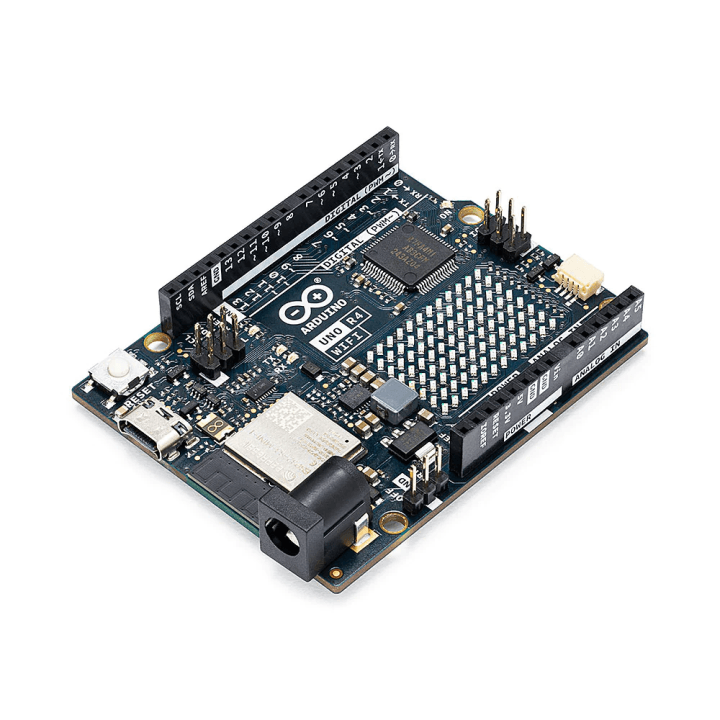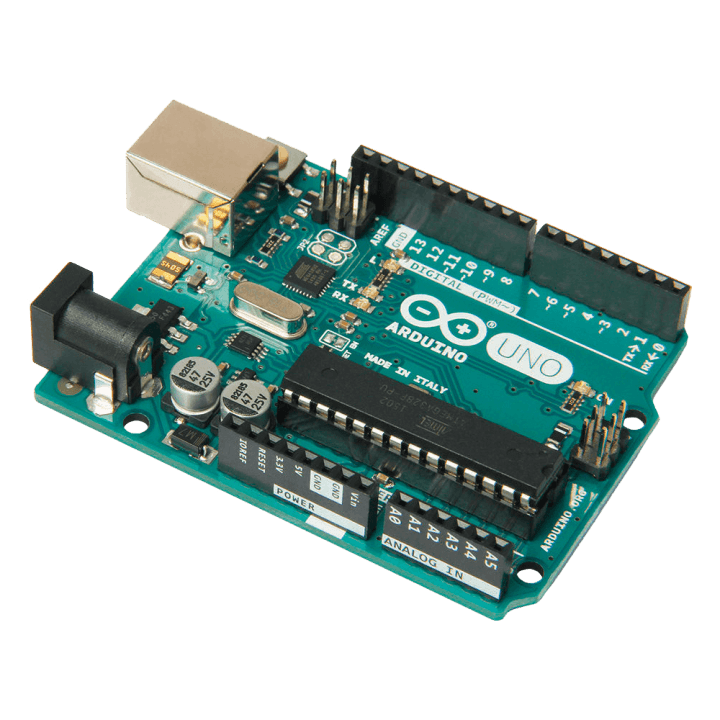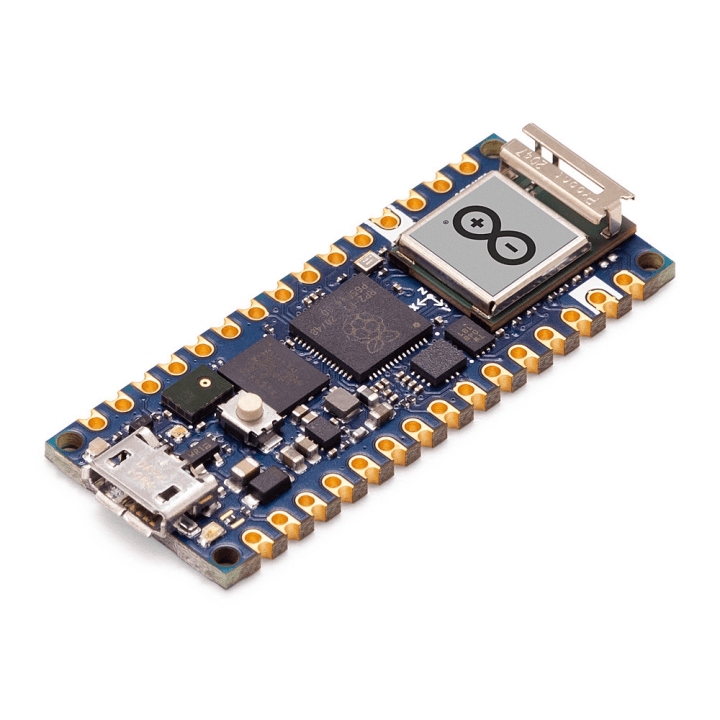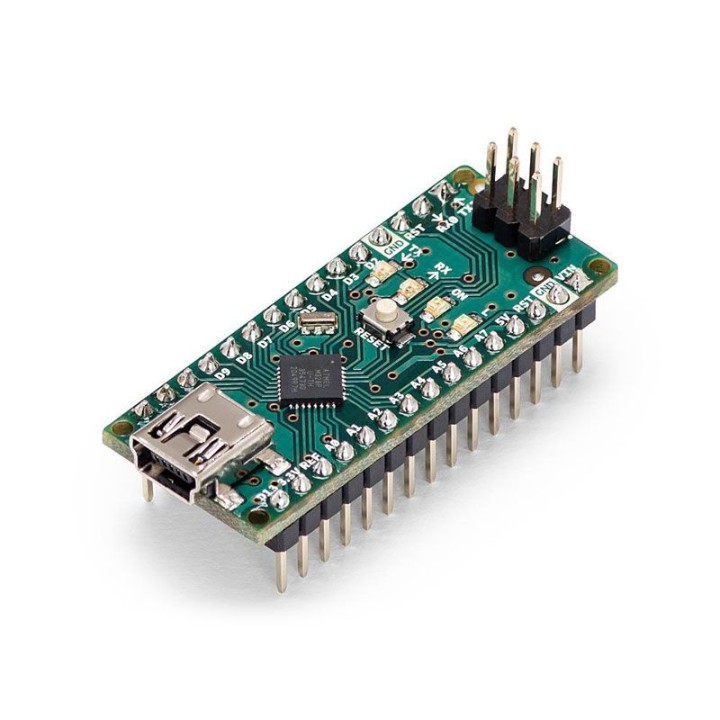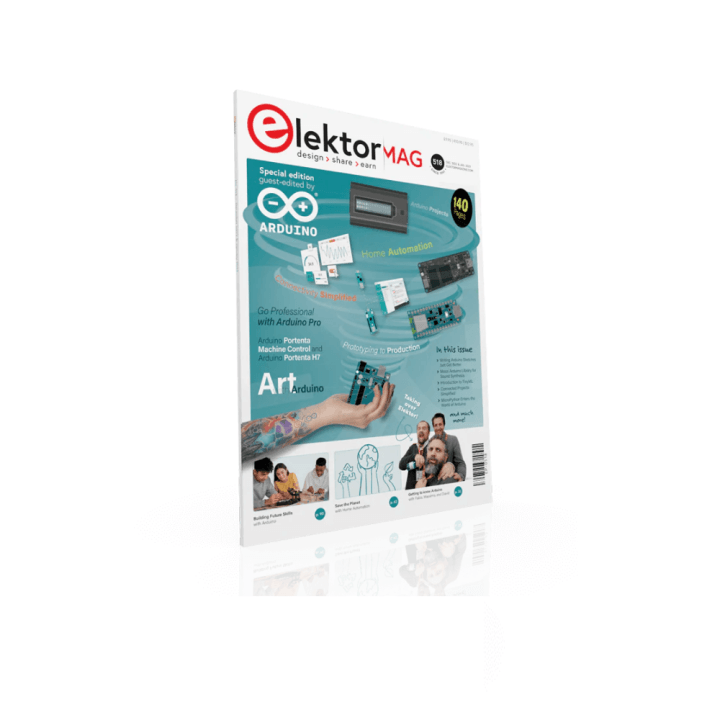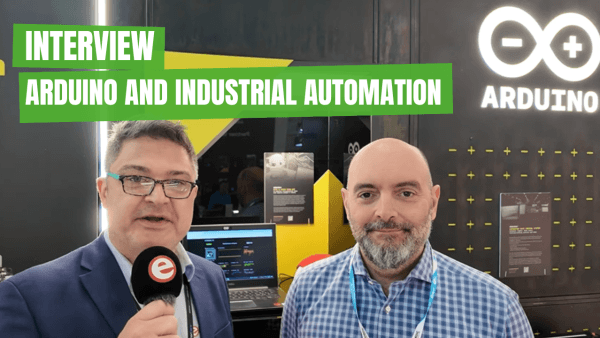Arduino
Arduino Projects & Applications
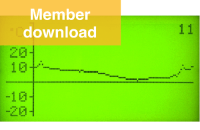
Arduino Temperature Recorder: Log Around the Clock
With the compact Arduino Uno, you have the capability to create a wide variety of interesting small-scale projects without breaking the bank. This project features a straightforward temperature logging device that displays the recorded temperatures from the last 24 hours on a screen. A highlight of this Arduino project is its software, which efficiently handles all functions independently, without relying on external libraries.Download article
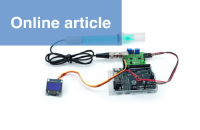
Check Your Water Quality: Measuring pH Value With the Arduino UNO R4
We love Arduino projects. This innovative project features a pH meter designed to precisely measure the pH level in liquids. By deploying a dedicated sensor, an Arduino UNO R4 Minima board, and a compact 0.96" OLED display, this design offers flexibility for various handy applications, delivering dependable and user-friendly outcomes.Read article online
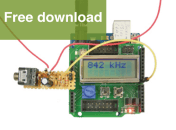
Arduino-Powered AM Transmitter
With this personal AM station, you can tune into the classic BBC via Internet radio and then retransmit it inductively on the medium wave frequency, recreating the listening experience from years gone by. The Arduino Uno has a built-in crystal that you can use to derive frequencies in the medium wave band by programmed division factors. This straightforward solution has the minor disadvantage that you cannot transmit in the 10 kHz spacing normal in the USA (9 kHz in other territories). Despite this, you’ll have no difficulty in finding a suitable unoccupied frequency.Download free article

Arduino Nano Waveform Generator
Since Elektor's earliest days, waveform generators, or "function generators," have been a favorite among pros and DIY enthusiasts. The generator covered in this article uses an Arduino Nano and falls into the more affordable and less complex category. Despite its simplicity and low cost, this Arduino project leverages an 8-bit AVR microcontroller to deliver considerable functionality. It proves to be a handy tool for examining audio and low-speed digital devices. Take a closer look!Download article
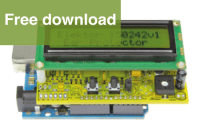
Arduino Sound-Level Protector
The Arduino proves itself to be incredibly versatile. With its affordable microcontroller board, you can embark on a myriad of projects, owing to its expansion connectors compatible with numerous 'shields'. In this piece, we demonstrate how you can create a 'sound-level traffic light' utilizing an Uno, in tandem with an Elektor-designed multipurpose shield and a few readily available components.Download free article
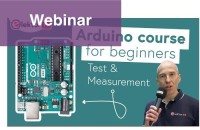
Test & Measurement with Arduino
You can implement Arduino solutions in various test and measurement applications. Want to learn how? This Elektor webinar showcases an array of techniques, methodologies, and tips for signal measurement and hardware testing using just an Arduino UNO board and simple sketches. As you will learn, costly equipment isn't always necessary for numerous measuring tasks.Watch Webinar
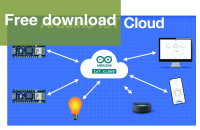
IoT Cloud a la Arduino
The Arduino IoT Cloud provides IoT application developers with a hassle-free solution for integrating a cloud backend, eliminating the need to grapple with MQTT. Intrigued? Let's delve into it. We cover everything from setting up the hardware to preparing the code.Download free article
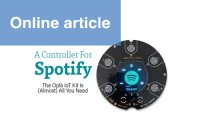
A Controller for Spotify: The Oplà IoT Kit Is (Almost) All You Need
Within the Arduino Oplà IoT kit lies the MKR WiFi 1010 Maker Board paired with a carrier board featuring relays, a round OLED display, capacitive touch buttons, and various sensors. In this guide, we detail the process of constructing a portable controller for the widely-used Spotify music player, ensuring the incorporation of necessary security measures.Read article online
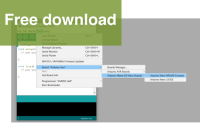
MQTT on the Arduino Nano RP2040 Connect
With the appropriate components and a touch of creativity, home automation becomes achievable, and this project based on the Arduino Nano RP2040 Connect serves as an ideal starting point. An additional perk is the potential contribution to environmental conservation. The Arduino Nano RP2040 Connect board features a 3-axis gyroscope, a 3-axis accelerometer, and a mic. These may seem strange sensors to use in a home automation system, but they can be useful.Download free article
Arduino Pro
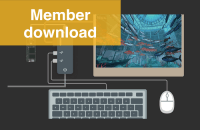
Getting Started with the Portenta X8
What is the Arduino Portenta X8? What can you use it for? The Portenta X8 stands as a robust, industrial-grade system-on-module (SoM) that operates on a Yocto Linux distribution provided by Foundries.io. With seamless Arduino Cloud integration, establishing a FoundriesFactory, composing Docker containers, and securely uploading them to your board or boards becomes a fairly simple process.Download article
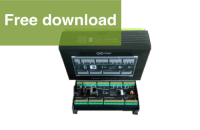
A CAN-to-MQTT Gateway: Arduino Portenta Machine Control and Arduino Portenta H7
Could the Arduino Portenta Machine Control serve as a substitute for traditional programmable logic controllers (PLCs)? This article provides a quick rundown of both the Arduino Portenta Machine Control and the Arduino Portenta H7. The CAN-to-MQTT gateway can process CAN messages according to CAN 2.0B and forward them as MQTT messages to a server connected via LAN.Download free article
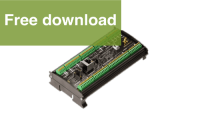
Unboxing the Portenta Machine Control
Over the past 15 years, Arduinos have solidified their position as the preferred boards for educators and makers, with millions of units shipped. This remarkable achievement extends beyond official counts, considering the multitude of compatible alternatives fostered by the ecosystem's commitment to open-source principles. In 2020, the Arduino Pro ecosystem made its debut, targeting the industrial/PLC market segment.Download free article
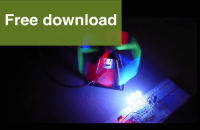
RGB Stroboscope with Arduino
In the past, before modern electronic systems became commonplace under the hoods of all vehicles, stroboscopes were employed to fine-tune the ignition timing of engines. However, in today's context, this practice has become increasingly rare. In relatively modern vehicles, the ignition timing is managed by an engine control unit (ECU), supported by numerous sensors. For this project, three RGB LEDs are switched on and off by modest driver transistors under the control of the Arduino Pro Mini. No PCB has been designed, and everything was built on a breadboard.Download free article
Arduino Hardware, Tools, and Accessories
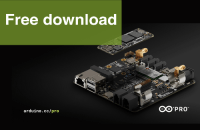
The New Portenta X8 (with Linux!) and Max Carrier Redefine What’s Possible
Get to know the Arduino Portenta X8! The industrial-grade SOM ships with Linux OS preloaded on it, making for a hybrid combo of microprocessor and microcontroller with the capability for artificial intelligence and machine learning on the edge. Max Carrier transforms Portenta modules into SBCs or reference designs that enable edge AI for high-performance industrial, building automation, and robotics applications.Download free article
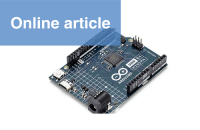
Two New Arduino UNO R4 Boards: Minima and WiFi
Arduino UNO R4 Minima and WiFi present themselves as worthy successors to the Arduino UNO R3. They maintain the same form factor, extension connectors, and 5-V I/O compatibility. The UNO R4 WiFi resembles the UNO R4 Minima but includes an integrated extension shield. Equipped with a Wi-Fi module, LED matrix, and a Qwiic connector, it facilitates the creation of IoT apps. Read on to learn about the details.Read online article
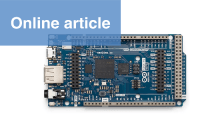
The Arduino GIGA R1 WiFi, a Portenta H7 for Makers?
Want to learn about the powerful Arduino GIGA R1 WiFi? The Arduino GIGA R1 WiFi has similar dimensions to the Arduino Mega, but its shape is about the only thing it has in common with the Mega. Its specs very similar to the almost three times smaller Portenta H7. Both feature a dual-core MCU comprising an ARM Cortex-M7 running at 480 MHz and Cortex-M4 clocked at 240 MHz. The microcontroller integrates 2 MB of flash memory as well as 1 MB of RAM. Both boards add 16 MB QSPI Flash memory and 8 MB of SDRAM. Plus, both have a Murata module for wireless connectivity, which means Wi-Fi and BLE. Read on.Read online article
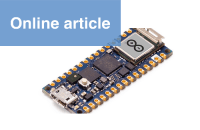
Arduino Nano RP2040 Connect (Review)
Get to know the Arduino Nano RP2040 Connect, which features an RP2040 microcontroller and boasts built-in Wi-Fi (802.11b/g/n) and Bluetooth 4.2 connectivity. In addition to its wireless capabilities, the board includes a mic for sound and voice activation, along with a six-axis smart motion sensor enriched with AI functionalities. An RGB LED is also integrated into its design. You can do a lot with 22 GPIO ports, such as effortlessly control relays, motors, LEDs, and gather data from switches and various sensors. With a generous 16 MB of flash memory, programming space is abundant, allowing for the storage of numerous webpages or other data. Take a closer look.Read online article
Arduino Uno Rev3
Arduino Uno is an open-source microcontroller board based on the ATmega328P. It has 14 digital input/output pins (of which 6 can be used as PWM outputs), 6 analog inputs, a 16 MHz ceramic resonator (CSTCE16M0V53-R0), a USB connection, a power jack, an ICSP header and a reset button.
Arduino Nano RP2040 Connect with Headers
The Arduino Nano RP2040 Connect is an RP2040-based Arduino board equipped with Wi-Fi (802.11b/g/n) and Bluetooth 4.2. Besides wireless connectivity the board comes with a microphone for sound and voice activation and a six-axis smart motion sensor with AI capabilities.
Arduino Nano
The Arduino Nano is a small, complete, and breadboard-friendly board based on the ATmega328 (Arduino Nano 3.x). It has more or less the same functionality of the Arduino Duemilanove but in a different package.
Elektor Special: Guest-edited by Arduino
What happens when Elektor and Arduino team up? United by a passion for electronics, we go full bore on creating innovative projects, writing in-depth engineering tutorials, and collaborating on a 140-page edition of your favorite electronics magazine.
Interview: Arduino for Industrial Automation
At Embedded World 2025, Elektor's Brian Tristam Williams stopped by the Arduino booth to speak with Marcello Majonchi about Arduino’s evolution from a DIY favorite to a serious force in industrial automation. The booth was alive with energy and packed with demos — from autonomous robots and computer vision to smart home tech in action. Brian explored the latest in the Portenta and Opta product lines and got insights into Arduino’s bold move to integrate ESP32. Marcello even dropped hints about what’s coming next.
Curious about what’s ahead for Arduino? Watch now to catch all the highlights and discover where Arduino is headed next.



